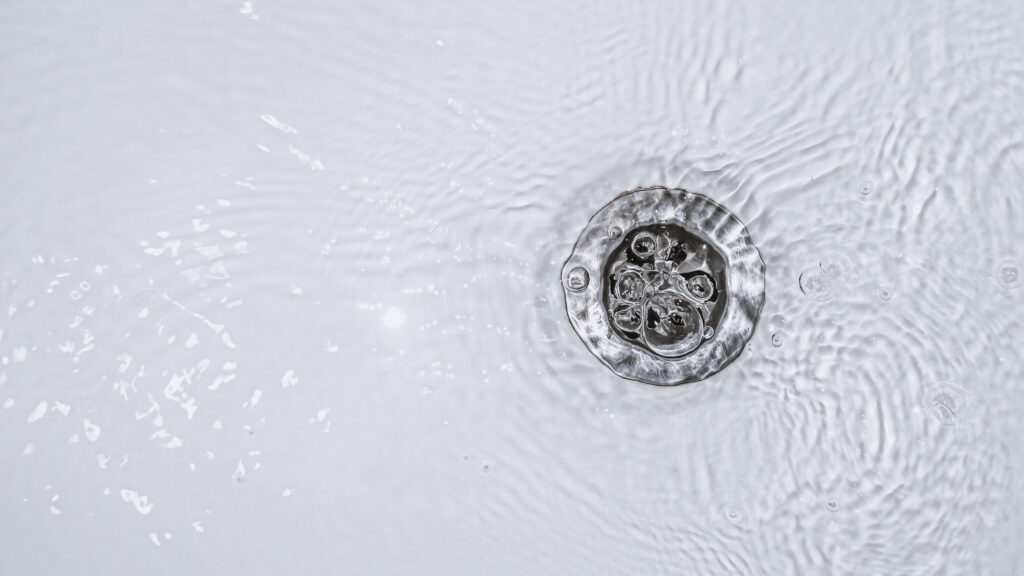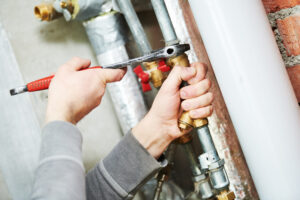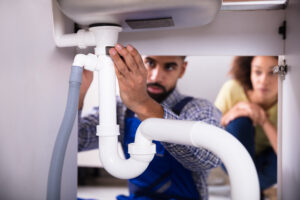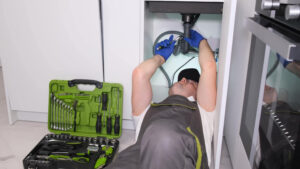Most of us live with slow drains far longer than we should. There’s something about that gradual decline in drainage speed that makes it feel normal – until one day you’re dealing with a complete backup and wondering how things got so bad. The truth is, your plumbing system speaks to you constantly, but most people don’t know the language.
Learning to read these signals can mean the difference between a simple fix and a plumbing disaster that costs thousands. Your drains don’t fail overnight; they give you weeks or months of advance warning if you know what to listen for.
The Subtle Language
of Failing Drains

Water Draining Down Slowly Is a Warning Sign
Water has a rhythm when it flows properly down a drain. Once you start paying attention, you’ll notice when that rhythm changes. The first sign isn’t always slower drainage – sometimes it’s a change in the sound water makes as it disappears. A smooth, consistent whoosh might develop a slight hesitation or create tiny air bubbles where none existed before.
Temperature tells a story too. Cold water moving sluggishly while hot water drains normally often indicates grease or soap buildup coating your pipes. These substances soften with heat, temporarily masking the problem until it becomes severe enough that even hot water can’t cut through.
Watch for water that seems confused about where to go. Instead of flowing directly toward the drain opening, water might pool in corners or create small eddies that weren’t there before. This happens when debris begins redirecting the natural flow pattern inside your pipes.
Kitchen Drain Personalities
Kitchen sinks develop distinct personalities as they age, and not all of them are charming. A healthy kitchen drain handles whatever you throw at it without complaint. But as grease and food particles accumulate, your sink starts becoming particular about what it will accept.
You might notice certain textures or temperatures cause hesitation where none existed before. Pasta water that used to disappear instantly might now require coaxing. Rice grains that previously vanished without trace might start appearing around the drain rim, pushed back up by sluggish water flow.
The most telling sign is when your kitchen sink starts playing favorites with different types of waste. If coffee grounds wash away easily but vegetable peels don’t, or if cold grease causes immediate slowdown while warm grease flows freely, you’re seeing evidence of partial blockages that will only worsen over time.
Beyond the Obvious Clues
Professional plumbers often check something most homeowners never consider: the relationship between your sink and dishwasher drainage. If your dishwasher cycles seem longer than usual, or if you notice slight backflow into the sink during the drain cycle, your kitchen drain problems might be more advanced than surface symptoms suggest.
Bathroom Drama Unfolds Slowly
Bathroom drains fail differently than kitchen drains because they deal with different enemies. Hair combines with soap scum to create dense mats that trap everything else flowing down. Unlike kitchen grease that can sometimes be dissolved with hot water, bathroom clogs tend to be physical barriers that grow denser over time.
The progression usually follows a predictable pattern. First, you notice water taking slightly longer to drain after brushing teeth or washing hands. Then shower water begins pooling around your ankles, though it eventually drains completely. Finally, you start seeing water backup during normal use, and that’s when most people realize they have a problem.
But there are earlier signs if you know where to look. Check the overflow drain in your tub – if it’s developing dark stains or unusual odors, it’s often connected to main drain issues. Similarly, if your bathroom exhaust fan seems to struggle more than usual, increased humidity from standing water might be the culprit.
The Economics of Timing
Understanding when slow drains become expensive problems isn’t just about convenience – it’s about protecting your investment in your home. The transition from minor inconvenience to major repair happens at predictable points, and timing your intervention makes a huge financial difference.
Most drain problems cost under fifty dollars to fix when caught early. The same issues can easily reach hundreds or thousands once they progress to pipe damage, water backup, or structural problems. The sweet spot for intervention is when you first notice consistent changes in drainage patterns, not when the problem becomes impossible to ignore.
Taking Control Early
The most empowering aspect of drain maintenance is how much control you actually have over the outcome. Unlike many home systems that require professional expertise, drain health responds well to consistent attention and early intervention.
Start paying attention to your drains’ normal behavior so you can recognize changes quickly. Most importantly, trust your instincts – if something seems different about how your drains are performing, investigate rather than hoping the problem resolves itself.
Your plumbing system wants to work properly. When it starts struggling, it’s asking for help, not testing your patience. Learning to respond to those early requests can save you significant money, stress, and disruption down the road.





